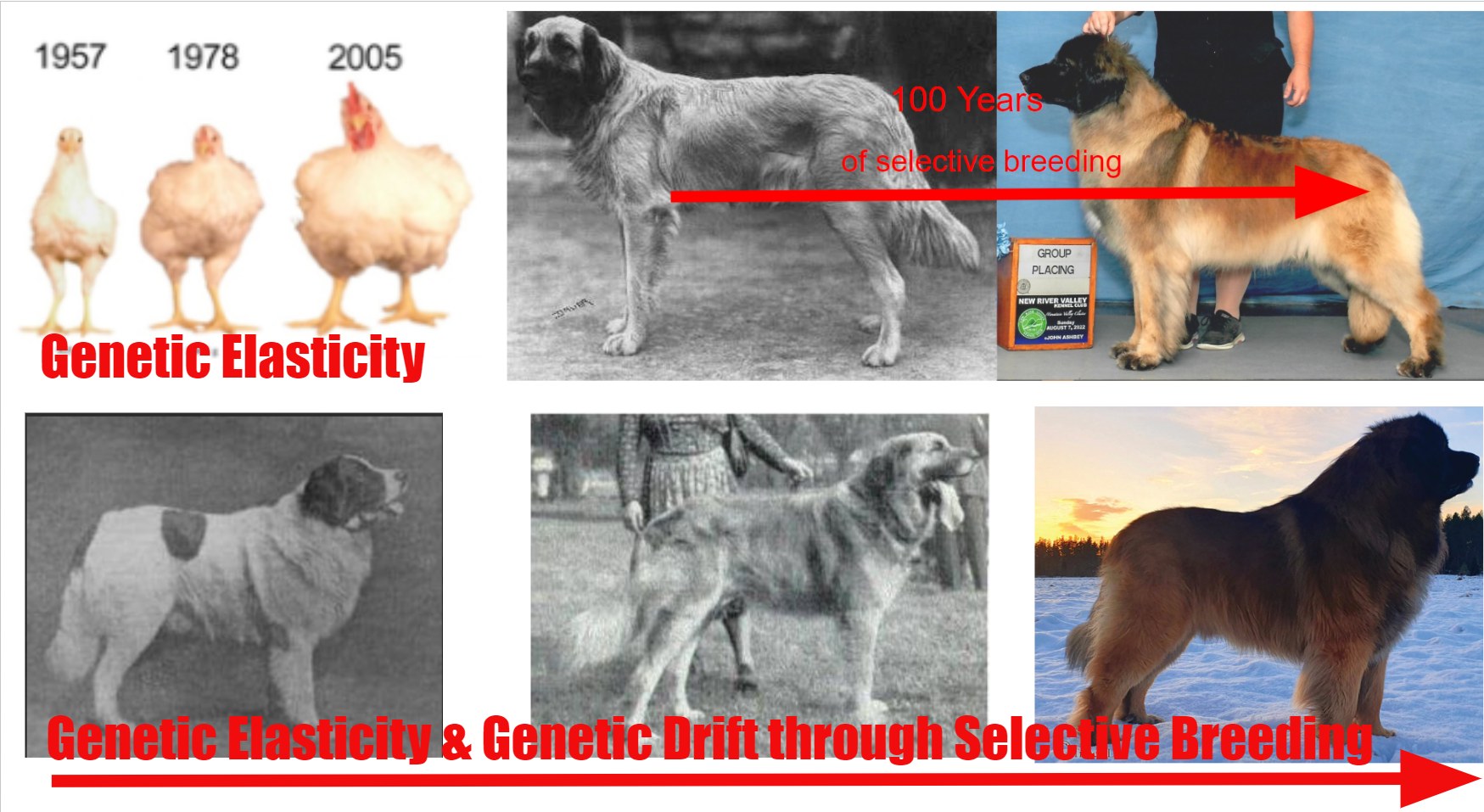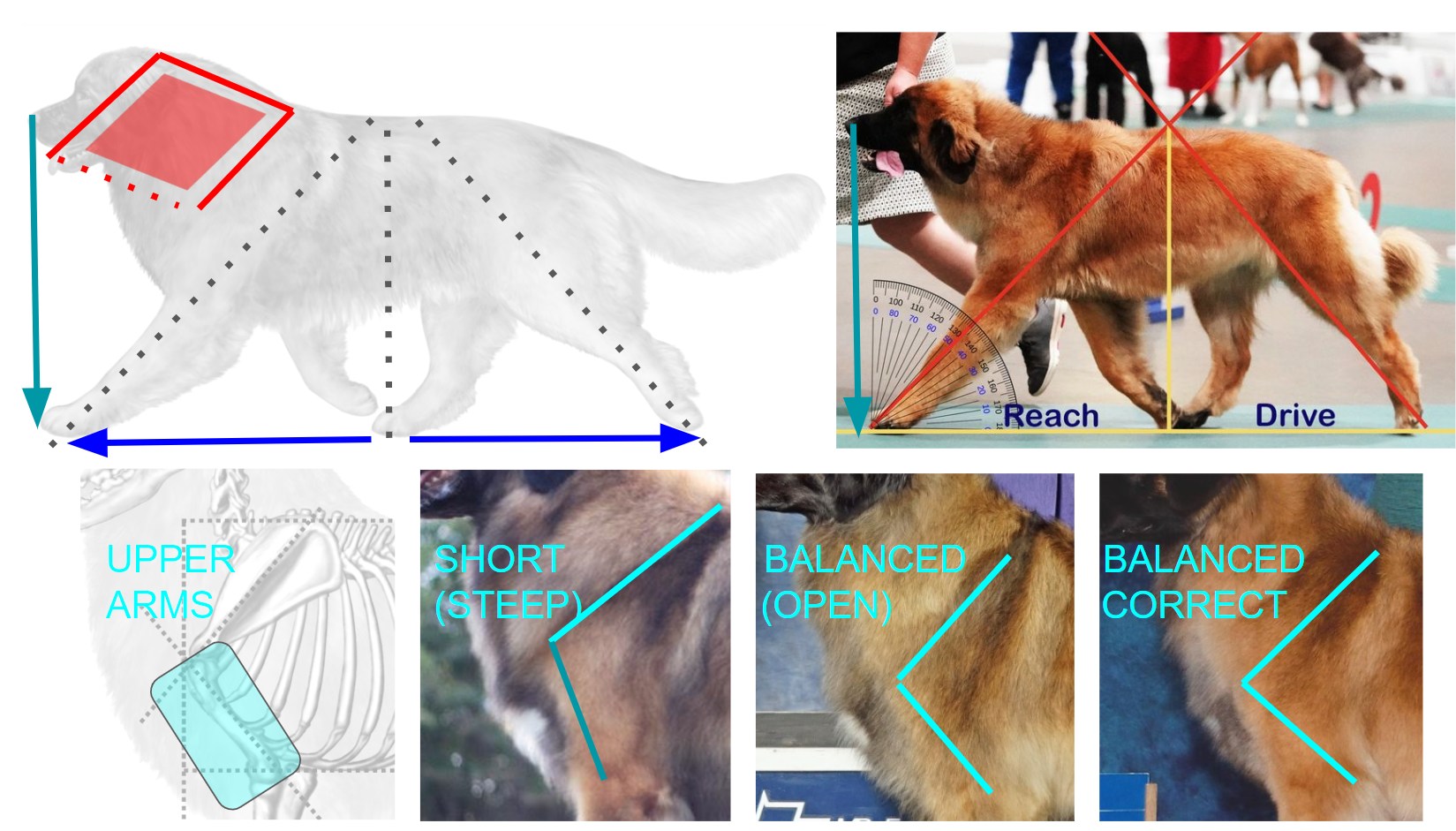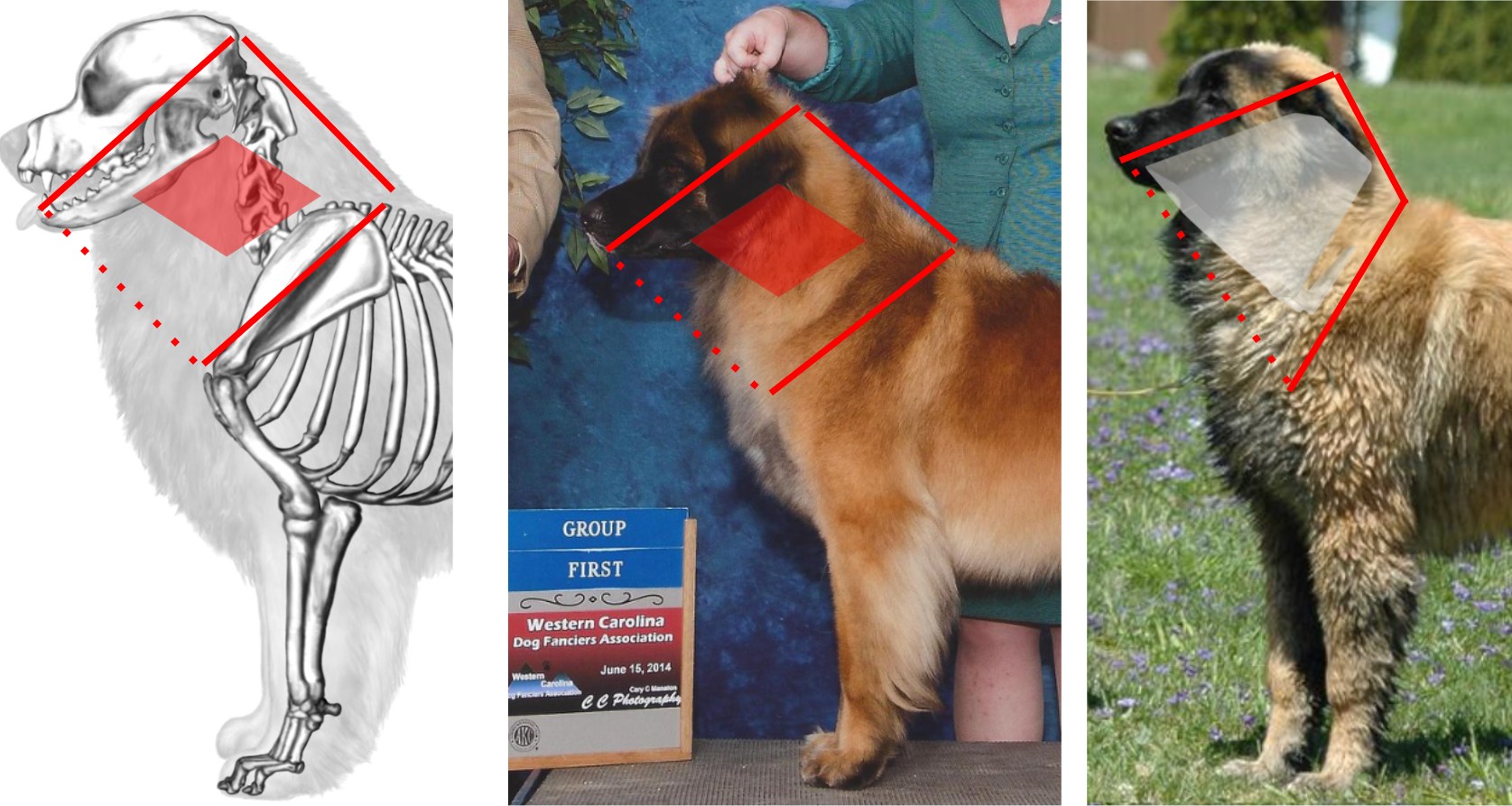When breeding from Leonbergers that fall short of the breed standard, the puppies often show noticeable improvements, aligning more closely with the breedís average. This can result in better angulation, more proper proportions, typier heads, thicker coats, stronger bone, etc. On the other hand, breeding from already exceptional Leonbergers often leads to offspring that regress toward the mean, making it hard to consistently reproduce or surpass those outstanding traits. This natural tendency underscores the importance of careful selection and pairing to maintain and enhance a breeding line. 𝐈𝐭í𝐬 𝐨𝐟𝐭𝐞𝐧 𝐞𝐚𝐬𝐢𝐞𝐫 𝐭𝐨 𝐦𝐚𝐤𝐞 𝐝𝐫𝐚𝐦𝐚𝐭𝐢𝐜 𝐢𝐦𝐩𝐫𝐨𝐯𝐞𝐦𝐞𝐧𝐭𝐬 𝐟𝐫𝐨𝐦 𝐦𝐞𝐝𝐢𝐨𝐜𝐫𝐢𝐭𝐲 𝐭𝐡𝐚𝐧 𝐟𝐫𝐨𝐦 𝐞𝐱𝐜𝐞𝐥𝐥𝐞𝐧𝐜𝐞!
So, how did we "evolve" Leonbergers from the type seen a century ago to the type (some may argue style) we aim for today? This transformation is thanks to genetic elasticity and genetic drift exaggerated through selective breeding. Genetic elasticity is the tendency for traits to randomly vary, and it's more pronounced in some species than others. For instance, the rapid changes seen in domestic chickens highlight incredible genetic elasticity. The creation of numerous and diverse dog breeds in a very short period of time and the variety within breeds which have very limited gene pools also come from this phenomenon.
Matt Townsend

𝐂𝐨𝐫𝐫𝐞𝐜𝐭 𝐢𝐬 𝐛𝐚𝐥𝐚𝐧𝐜𝐞𝐝. 𝐁𝐚𝐥𝐚𝐧𝐜𝐞𝐝 𝐢𝐬𝐧'𝐭 𝐧𝐞𝐜𝐞𝐬𝐬𝐚𝐫𝐢𝐥𝐲 𝐜𝐨𝐫𝐫𝐞𝐜𝐭. We looked at stifle, the head-neck-shoulder assembly, and desirable proportions. Let's wrap up this little conformation journey with some thoughts on 𝐭𝐡𝐞 𝐞𝐯𝐞𝐫 𝐞𝐥𝐮𝐬𝐢𝐯𝐞 𝐮𝐩𝐩𝐞𝐫 𝐚𝐫𝐦 - a small bone that makes a big difference! Bear with me, it takes a large amount of background knowledge to understand this little piece of anatomy! (This is my opinion as a breeder and involves some conjecture, not in any official capacity.)

The neck is "𝘰𝘧 𝘴𝘶𝘧𝘧𝘪𝘤𝘪𝘦𝘯𝘵 𝘭𝘦𝘯𝘨𝘵𝘩 𝘵𝘰 𝘢𝘭𝘭𝘰𝘸 𝘧𝘰𝘳 𝘱𝘳𝘰𝘶𝘥 𝘩𝘦𝘢𝘥 𝘤𝘢𝘳𝘳𝘪𝘢𝘨𝘦" and the head is "𝘥𝘦𝘦𝘱𝘦𝘳 𝘵𝘩𝘢𝘯 𝘪𝘵 𝘪𝘴 𝘣𝘳𝘰𝘢𝘥." There isn't an education to be found in the standard itself to understand how these parts exist in direct proportion to one another. However, if you take a look at Leonbergers that use their fronts as described in the standard where "𝘵𝘩𝘦 𝘴𝘵𝘳𝘪𝘥𝘦 𝘪𝘴 𝘱𝘰𝘸𝘦𝘳𝘧𝘶𝘭, 𝘧𝘳𝘦𝘦 𝘢𝘯𝘥 𝘧𝘭𝘶𝘪𝘥, 𝘸𝘪𝘵𝘩 𝘨𝘰𝘰𝘥 𝘳𝘦𝘢𝘤𝘩 𝘢𝘯𝘥 𝘴𝘵𝘳𝘰𝘯𝘨 𝘥𝘳𝘪𝘷𝘦, 𝘨𝘪𝘷𝘪𝘯𝘨 𝘵𝘩𝘦 𝘪𝘮𝘱𝘳𝘦𝘴𝘴𝘪𝘰𝘯 𝘰𝘧 𝘦𝘧𝘧𝘰𝘳𝘵𝘭𝘦𝘴𝘴 𝘱𝘰𝘸𝘦𝘳", you can see a clear pattern emerge. When considering the length of the skull to the occiput, the length of the neck to the top of the withers, and the length of the shoulder blade's spine to the point of the shoulder, 𝐲𝐨𝐮 𝐬𝐡𝐨𝐮𝐥𝐝 𝐠𝐞𝐭 𝐬𝐨𝐦𝐞𝐭𝐡𝐢𝐧𝐠 𝐯𝐞𝐫𝐲 𝐜𝐥𝐨𝐬𝐞 𝐭𝐨 𝐚 𝐝𝐢𝐚𝐦𝐨𝐧𝐝 𝐨𝐧 𝐚 𝐜𝐨𝐫𝐫𝐞𝐜𝐭𝐥𝐲 𝐜𝐨𝐧𝐬𝐭𝐫𝐮𝐜𝐭𝐞𝐝 𝐋𝐞𝐨𝐧𝐛𝐞𝐫𝐠𝐞𝐫 stacked with the legs perpendicular to the ground.



